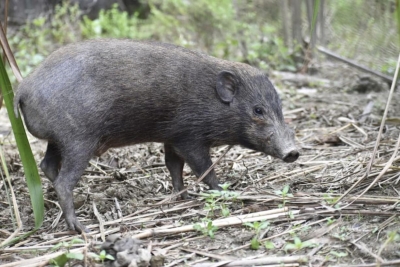
The smallest member of the pig family, the pygmy hog (porcula salvania), is a critically endangered species. Once found along a narrow strip of tall and wet grassland plains on the Himalayan foothills – from Uttar Pradesh to Assam, through Nepal’s terai areas and Bengal’s duars – it was thought to have become extinct in the 1960s. But in 1971 it was “re-discovered” with a small population in the Barnadi Wildlife Sanctuary.
Even then the numbers have kept declining. They are estimated to be less than 200 pygmy hogs, half of what was estimated in the mid 1990s. The only viable population of the pygmy hog in the wild is in the Manas Tiger Reserve in Assam. A two-decade long effort to conserve this 25-cm tall animal has however turned the tide – the 110th captive-bred Pygmy Hog was recently reintroduced in the wild in the northeast Indian state.
The pygmy hog is one of the very few mammals that build its own home, or nest, complete with a ‘roof’, but maybe more important than its own attributes, is the fact that it is an indicator species. Its presence reflects the health of its primary habitat, the tall, wet grasslands of the region. One of the main reasons for its plummeting numbers was grassland degradation. A number of other endangered species like the one-horned rhino, tiger, hog deer, eastern barasingha, water buffalo, hispid hare, and the Bengal florican, are also dependent on the grasslands.
Picture Credit : Google




